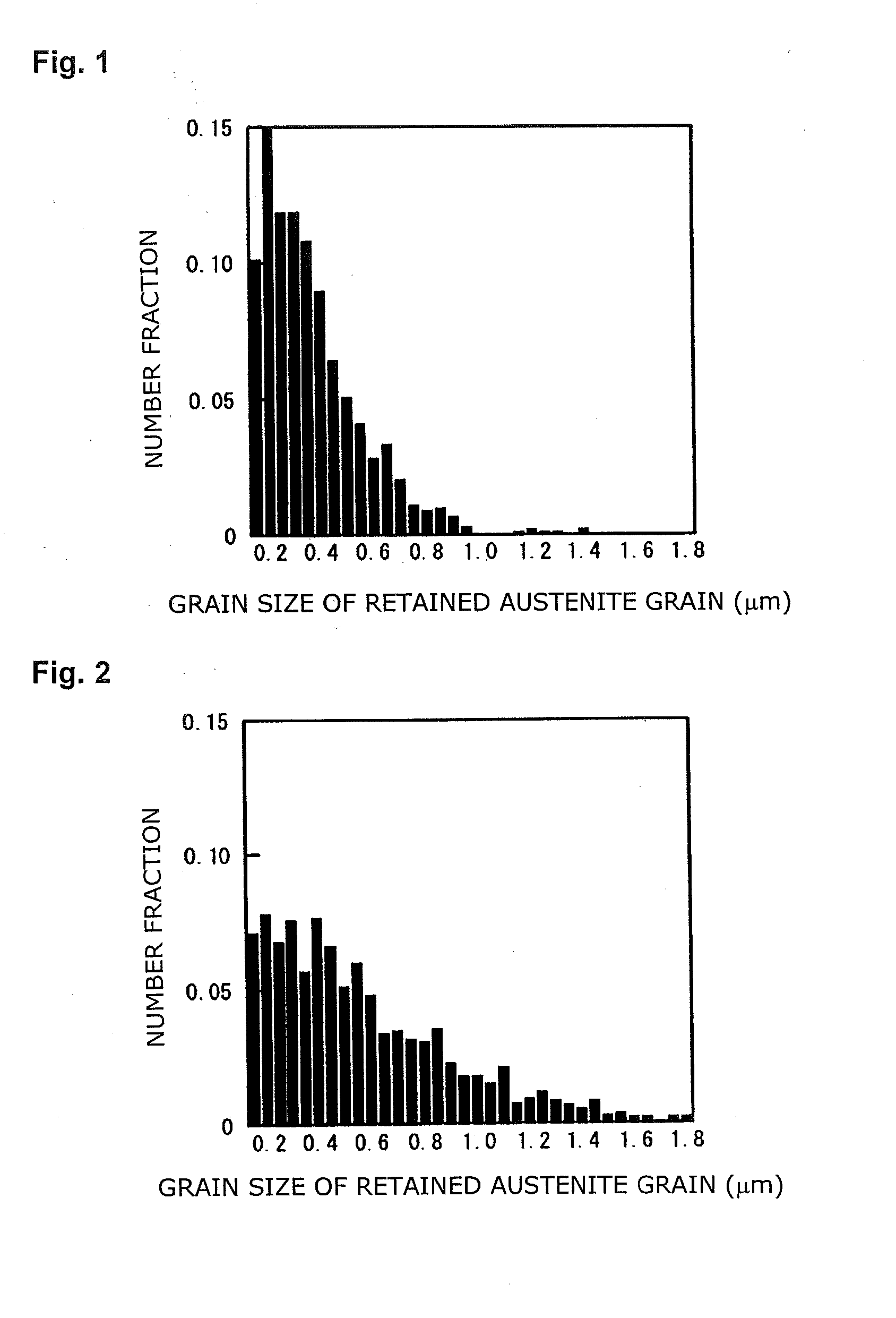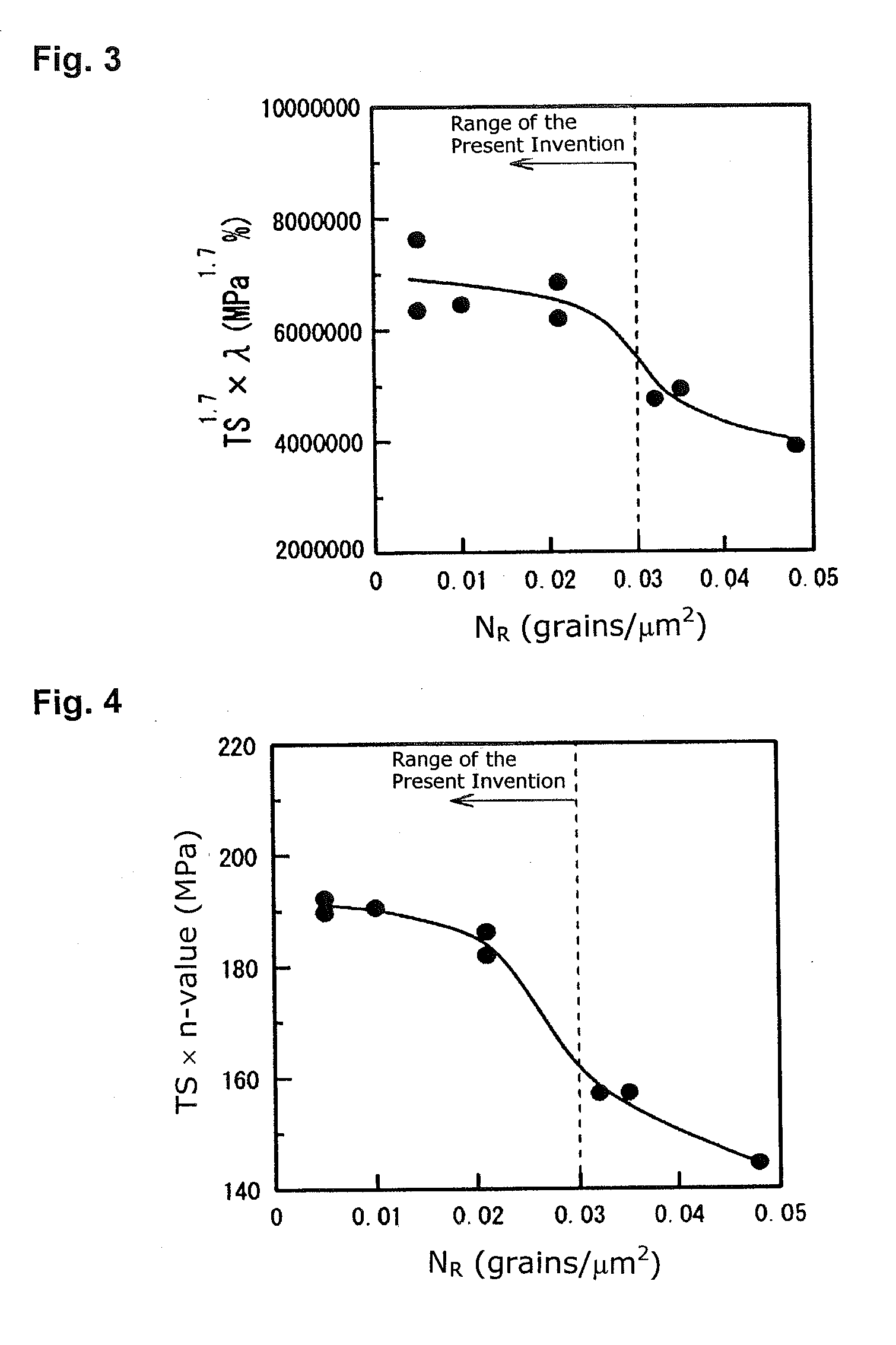Cold-rolled steel sheet
a technology of cold-rolled steel and steel sheets, which is applied in the direction of furnaces, heat treatment equipment, manufacturing tools, etc., can solve the problems of difficult to meet these characteristics, crystal grains are liable to be coarse, cracks and wrinkles, etc., and achieve the effect of improving workability and thermal stability
- Summary
- Abstract
- Description
- Claims
- Application Information
AI Technical Summary
Benefits of technology
Problems solved by technology
Method used
Image
Examples
example 1
[0116]Using an experimental vacuum melting furnace, steels having the chemical compositions shown in Table 1 were melted and casted. Each obtained ingot was produced into a billet having a thickness of 30 mm through hot forging. Each billet was heated to 1200° C. using an electric heating furnace, and was held at this temperature for 60 minutes, and thereafter was hot-rolled under the conditions shown in Table 2.
[0117]Specifically, by using an experimental hot-rolling mill, 6-pass rolling was performed in the temperature region of Ar3 point or higher to finish each of the billets into a steel sheet having a thickness of 2 to 3 mm. The draft of the final one pass was set at 12 to 42% in terms of the reduction rate of the sheet thickness. After hot rolling, the steel sheet was cooled to a temperature of 650 to 720° C. under various cooling conditions by using a water spray. After having been cooled naturally for 5 to 10 seconds, the steel sheet was cooled to various temperatures at a ...
PUM
| Property | Measurement | Unit |
|---|---|---|
| grain size | aaaaa | aaaaa |
| volume fraction | aaaaa | aaaaa |
| volume fraction | aaaaa | aaaaa |
Abstract
Description
Claims
Application Information
 Login to View More
Login to View More - R&D
- Intellectual Property
- Life Sciences
- Materials
- Tech Scout
- Unparalleled Data Quality
- Higher Quality Content
- 60% Fewer Hallucinations
Browse by: Latest US Patents, China's latest patents, Technical Efficacy Thesaurus, Application Domain, Technology Topic, Popular Technical Reports.
© 2025 PatSnap. All rights reserved.Legal|Privacy policy|Modern Slavery Act Transparency Statement|Sitemap|About US| Contact US: help@patsnap.com



